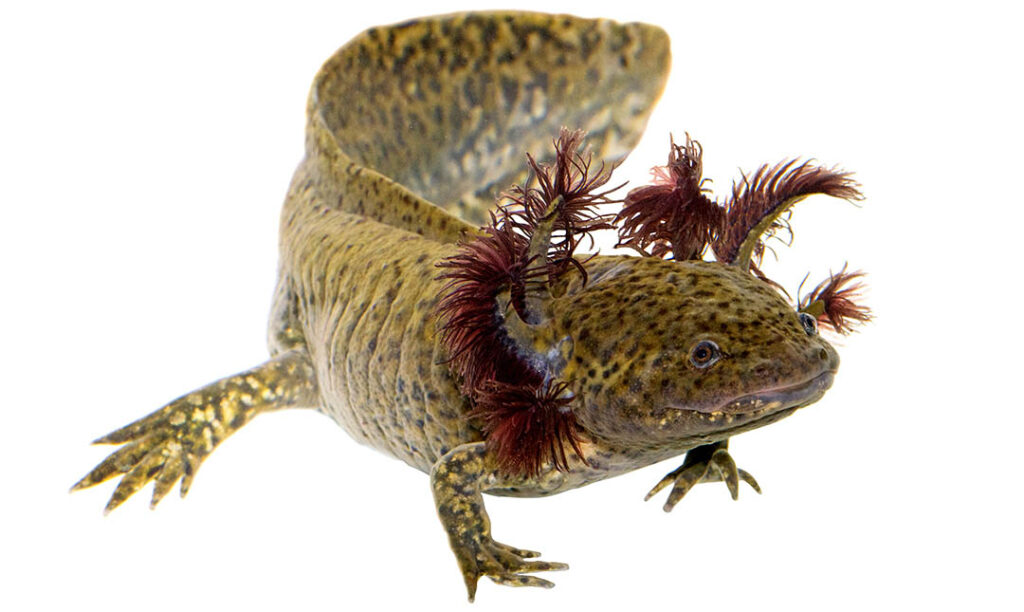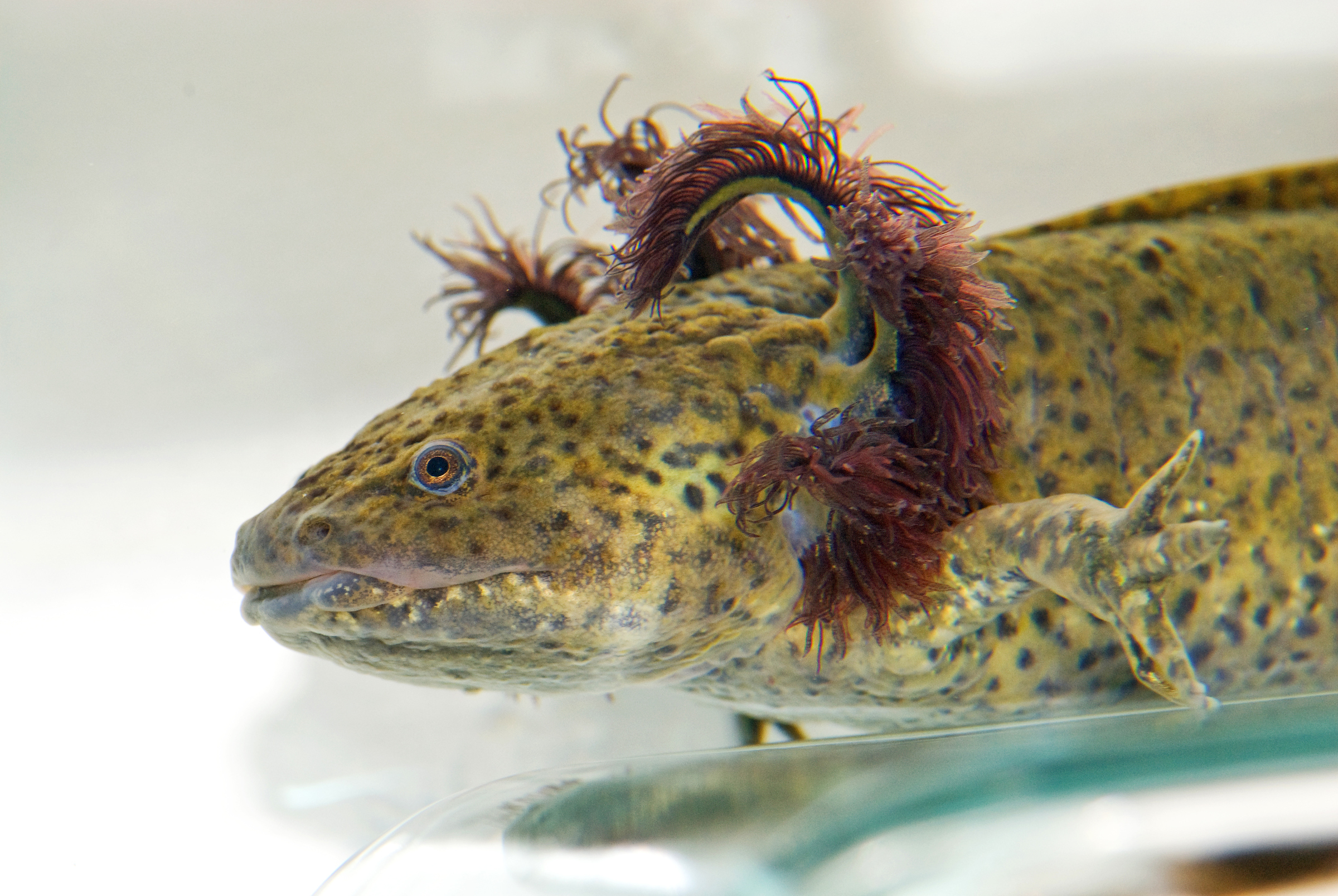About
The axolotl is the Peter Pan of the amphibian world. It is a tiger salamander that never grows up. Like frogs, salamanders hatch from waterborne eggs and spend the early part of their lives in a totally aquatic larval stage. Then, at the right time, an amazing metamorphosis happens and the larval salamander, frog, or toad begins to transform. Its fins shrink, legs develop, and gills become lungs. But for some unknown reason, the tiger salamander larvae that live in Lake Xochimilco near Mexico City never change, retaining their larval features—dorsal fins, gills, and prominent feathery gills—into adulthood. Scientists continue to study the mysterious axolotl, which in addition to its odd state of arrested development is able to (like other salamanders) regenerate almost all of its body parts.

STATUS
The axolotl is critically endangered because their natural habitat is less than seven miles in size and shrinking, as is the quality of their environment. In recent years, scientists have only found about 100 mature individuals. Their native lakes are being polluted as more people move into the area of Mexico where they reside, and this has introduced disease-carrying bacteria to the axolotls.
HABITAT
Axolotls are found exclusively in six little highland lakes around Mexico City in Jalisco and each of these little highland lakes has its own species of axolotl. Unfortunately, as with most species that have a tiny natural range, they are all threatened by development and habitat loss. Although they readily reproduce in human care and are common in the pet trade, wild populations are on the bring of extinction.
DIET
Axolotls are carnivorous, and their diet includes a variety of worms, insects, tadpoles, and other small invertebrates.
PHYSICAL CHARACTERISTICS
Adults are usually 7 to 11 inches long, although some have been reported over 17 inches in length.

